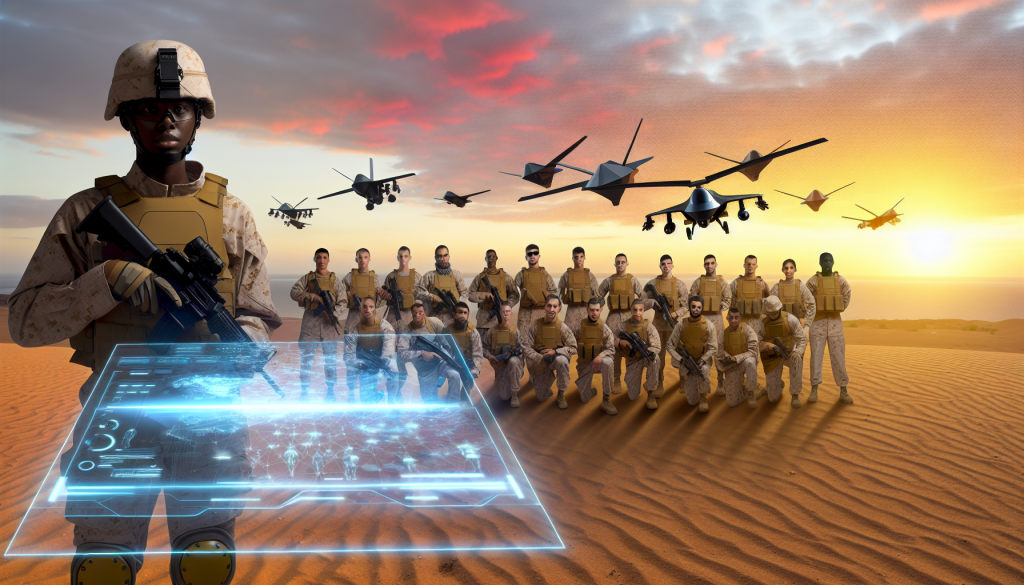Modernizing the Marine Corps: Evolving Strategies for Future Warfare
The U.S. Marine Corps is embarking on an ambitious modernization journey, one that seeks to redefine how it engages in warfare. This initiative aims to enhance the branch’s operational capabilities, transitioning from traditional “kill chains” to the advanced concept of “kill webs.” This evolution represents a transformative approach in which interconnected systems and technologies bolster military intelligence and operational effectiveness.
Understanding “Kill Webs”
At the heart of the Marine Corps’ modernization plans is the concept of “kill webs.” Unlike the older “kill chains” that treated warfare as a linear sequence of events, kill webs are designed to promote greater interconnectedness among various military assets. This networking of capabilities enables quick identification and targeting of threats across global landscapes, enhancing situational awareness and strategic responses.
Tools for Contested Environments
Marine Corps Commandant Gen. Eric Smith emphasizes the importance of equipping Marines with advanced tools suitable for complex, contested environments. These tools encompass precision fires, unmanned systems, and resilient command and control units. As Smith noted in the introduction to the 2025 Force Design Update, “We do not man the equipment; we equip the Marine,” highlighting the significance of human ethos amidst technological enhancements.
A Candid Assessment of Current Capabilities
The 2025 Force Design Update, released recently, serves as a candid evaluation of the Marine Corps’ current status and prospective future. This 24-page document indicates a strategic shift in response to rapidly evolving warfare character. The shift is crucial as adversaries are increasingly deploying advanced weaponry and innovative tactics designed to challenge U.S. military advantages.
Historical Context: The Roots of Force Design
The Force Design initiative traces its roots back to 2020, marking a clear pivot toward evolving naval expeditionary warfare strategies. This alignment with the Pentagon’s National Defense Strategy aims to ensure that the Marine Corps remains agile and prepared for modern combat, adapting to new warfare paradigms characterized by drones, cyber warfare, and electronic combat.
Continuous Learning and Wargaming
A key aspect of the Force Design initiative is its commitment to continuous learning. The Marine Corps is actively engaging in wargames and real-world exercises to refine its strategies and validate new approaches. This iterative process ensures that the Corps can stay abreast of technological advancements while honing operational effectiveness.
Ongoing Modernization Projects
In the coming months, the Marine Corps plans to ramp up several modernization projects. Among these is a thorough refresh of the Marine Air Command and Control System, which is critical for effective aerial operations. Additionally, the establishment of a Marine Corps Attack Drone Team at Quantico seeks to improve drone capabilities for reconnaissance and combat.
The incorporation of artificial intelligence (AI) and machine learning will further enhance the Corps’ operational efficiency, enabling smarter decision-making in dynamic environments. The collaborative combat aircraft initiatives aim to foster greater synergy among manned and unmanned platforms, optimizing combat strategies.
Cyber and Electromagnetic Spectrum Operations
Modern warfare extends beyond traditional battlefield engagements. The Marine Corps recognizes the necessity of maneuvering effectively in cyberspace and the electromagnetic spectrum. Initiatives within the Marine Information Groups and Marine Forces Cyber focus on building defenses for warfighting systems, preserving operational freedom, and executing offensive capabilities when necessary.
Transforming Logistical Operations
Another crucial aspect of the modernization effort is reimagining logistics to navigate the complexities of modern military operations. The Marine Corps will launch new prepositioning programs in regions like the Philippines, Australia, and Palau to bolster regional responsiveness and build alliances. Transitioning the Autonomous Low-Profile Vessel into a program of record aims to enhance long-range logistics distribution, ensuring the Corps can sustain operations in contested areas.
Conclusion
As the Marine Corps adapts to the ever-changing landscape of warfare, its focus on modernizing capabilities underscores a commitment to maintaining effectiveness and resilience. By integrating advanced technology, embracing a culture of continuous learning, and rethinking operational strategies, the Corps aims to ensure its Marines remain a potent force ready to confront modern challenges.
Written by Brandi Vincent, DefenseScoop’s Pentagon correspondent. Vincent specializes in reporting on disruptive technologies and policies shaping national defense, bringing a nuanced perspective to the evolving landscape of military operations.

